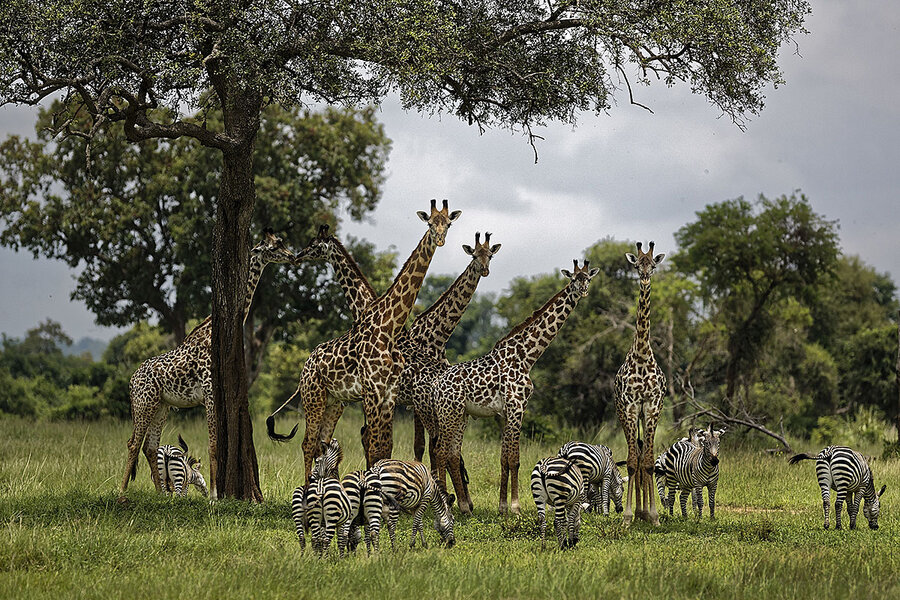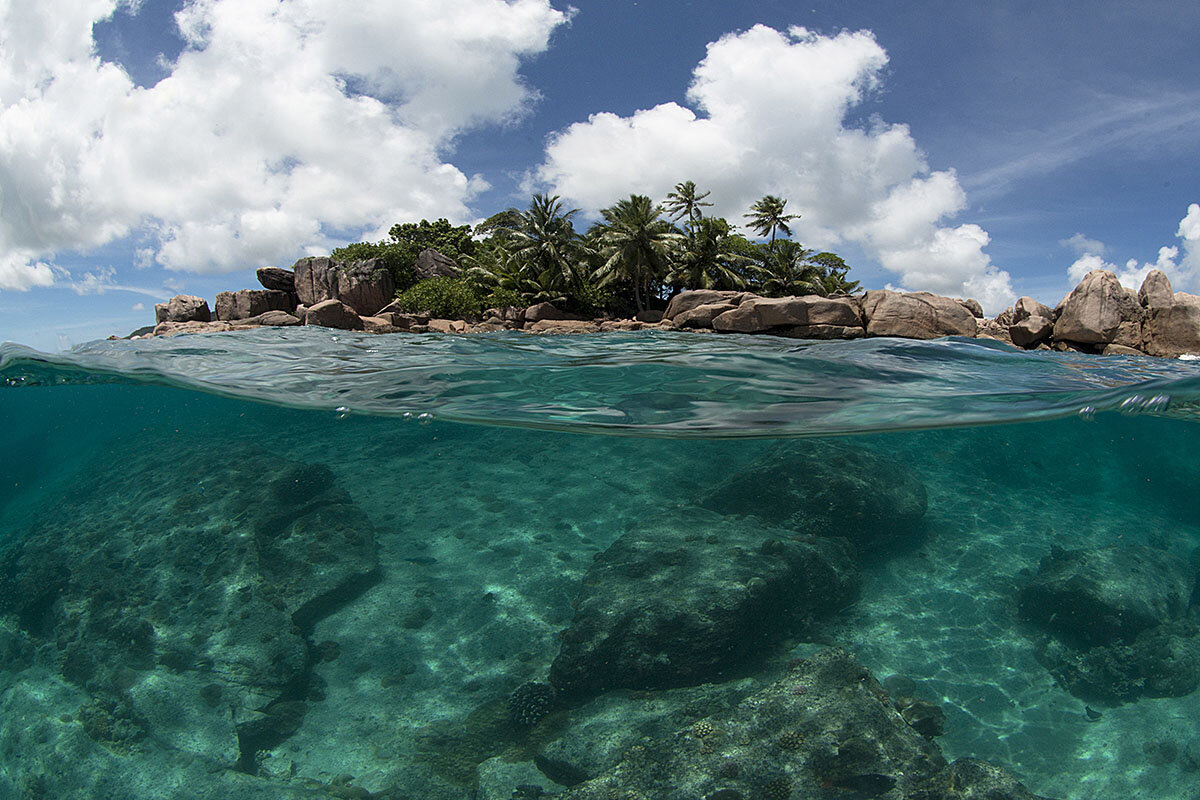So 1 million species are at risk of extinction. Now what?
Loading...
The statistic is staggering. One million animal and plant species are at risk of extinction, many within decades, if humans don’t act to save them, according to the executive summary of a United Nations global assessment of biodiversity released last week.
One million species.
To put that into context, although scientists aren’t sure exactly how many species currently live on the planet, estimates range from 2 million to 12 million. Researchers have formally described almost 2 million species so far.
Why We Wrote This
The bleak environmental reports just keep coming. The latest declares that humans pose a threat to a vast portion of Earth’s plants and animals. But what can the public do with that kind of information?
The U.N. report puts a number to something many ecologists have been saying for years: that we’re in the midst of the Earth’s sixth mass extinction – and it’s largely due to human activities. Corroborating papers continue to pile up. Just today, Dutch researchers published a study implicating overhunting in the steep decline of tropical forest mammal populations.
The report, put out by the Intergovernmental Science-Policy Platform on Biodiversity and Ecosystem Services (IPBES), points to five main drivers of modern extinction. Those factors are, in diminishing order of magnitude, changes in land and sea use, hunting and fishing pressures, climate change, pollution, and invasive species.
Newspapers across the United States were plastered with this gloomy news last week. But whether such a landmark report on biodiversity will leave a lasting mark on society or not remains to be seen. And what happens next may matter more than the report itself.
“The power of the report will only be known when we see the reflection of the report in action,” says Keith Tidball, an ecological anthropologist at Cornell University.
The rock and the lightbulb
Many landmark environmental reports in the past have ended up as fodder for policymakers already predisposed to care about their specific issue, rather than engaging additional minds on the topic.
These reports can serve as either a rock or a lightbulb, says Robert Stavins, a professor of energy and economic development and director of the Harvard Project on Climate Agreements at Harvard University. In political processes, scientific analysis can either illuminate a topic for policymakers to discuss how to proceed, or it can become ammunition for those who are already predisposed to a particular position that is supported by the analysis.
Take the Intergovernmental Panel on Climate Change reports, for example. Those analyses have often been used as political rocks – albeit sometimes effective ones – rather than as tools to engage discussion.
There is a place for “rocks,” says Professor Stavins. “You can’t win a battle without ammunition.” But, he says, reports that end up as ammunition don’t end up changing a lot of minds.
The authors of the new U.N. biodiversity report call for “transformative change” in societal paradigms and values in order to halt the mass extinction. But that might take a lightbulb moment rather than a rock.
The new U.N. report was put together by hundreds of scientists from 50 countries. Together, they spent three years systematically combing through data and thousands of scientific reports, and probing government, indigenous, and local knowledge sources, too. They looked through data from the past five decades to assess how biodiversity and habitats have changed, and the relationship between economic development and changes in nature.
Some people have quibbled with the 1 million figure. The study authors arrived at that global estimate in part by extrapolating the rate of extinction previously calculated by the International Union for Conservation of Nature. Researchers with the IUCN had examined a much smaller number of species.
A recipe for action
The U.N. report is the most extensive and comprehensive assessment of global biodiversity ever conducted, but some are skeptical that a single report could trigger a widespread shift in perspective on biodiversity and extinction.
It might be one piece of what helps shift perspectives on biodiversity and extinction, says Kurk Dorsey, an environmental historian at the University of New Hampshire. But it probably isn’t enough on its own.
The recipe for action on environmental issues typically requires three ingredients, Professor Dorsey says. The U.N. report offers one: the science. But there generally needs to be a sentimental or sympathetic cause that people can get behind as well. Economic losses and payoffs can also be deal breakers – or makers.
That combination came together when researchers discovered a hole in the ozone layer in the 1980s. The ozone layer protects the Earth from harmful solar radiation, which would affect humans and all other life on the planet – the sympathetic cause. Scientists linked the damage to the emissions of certain industrial chemicals that wouldn’t be too costly to phase out. And policymakers quickly came together to ratify the international treaty known as the Montreal Protocol to ban those substances. Today, the ozone hole is healing.
In the case of the ozone layer, the economic trade-offs were minimal. Issues like biodiversity loss and climate change, however, can come with much higher costs.
There is an economic argument for biodiversity, says Thomas Lovejoy, a professor in the department of environmental science and policy at George Mason University and a senior fellow at the United Nations Foundation. Many plants and animals are vital to life as we know it. They underpin modern medicines and technologies, and intact ecosystems support clean drinking water systems and clean air.
“Most people are blissfully unaware of what biodiversity does for them,” he says.
But the wonder of nature can also be a powerful force, adds Dr. Lovejoy, who has been called the “godfather of biodiversity” for coining the term. To explain, he tells a story of “craniacs,” people who flocked to Nebraska to see sandhill cranes as they stopped in the Platte River Valley on their migration paths. When the river habitat became less appealing for the birds, craniacs and others who adored the birds advocated for projects to maintain its hospitality for the cranes.
Sparking compassion
“Numbers numb but stories engage,” says Ed Maibach, director of George Mason University’s Center for Climate Change Communication. Although the U.N. biodiversity report provides global context to extinction, Dr. Maibach’s research suggests that stories about specific threatened species and their plight will more likely motivate people to action.
Stories lend mental pictures to associate with an issue, Dr. Maibach explains. For example, if you think about climate change, you probably automatically visualize a polar bear stranded on a chunk of ice. An image or story like that is more likely to evoke empathy.
It may go beyond feeling compassion for another being, though, suggests Dr. Tidball. He points to retired Harvard biologist Edward O. Wilson’s hypothesis that humans innately seek out connections with nature and other life. Dr. Tidball says that although we may now hold mental images of ourselves as separate from nature, we still crave that affinity with nature, that reconnection to being part of the biosphere. He suggests that spending time in nature may also engage more people with biodiversity.
Whether society changes course in response to scientific reports of the sixth mass extinction or not may come down to a philosophical issue, says Professor Dorsey.
“It really gets down to the question of what is the role of humanity on the planet,” he says.







